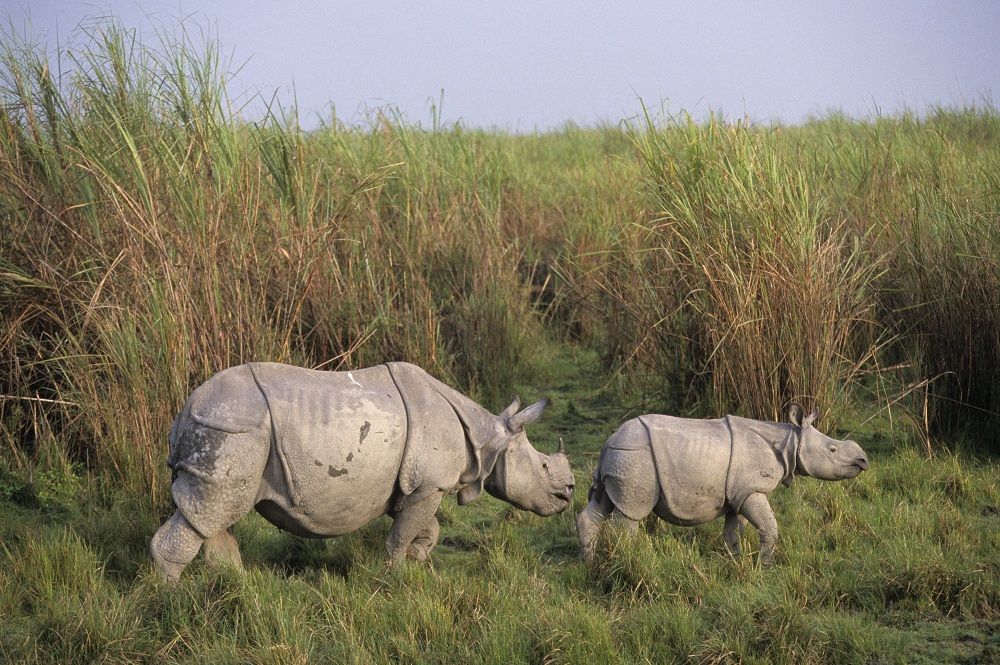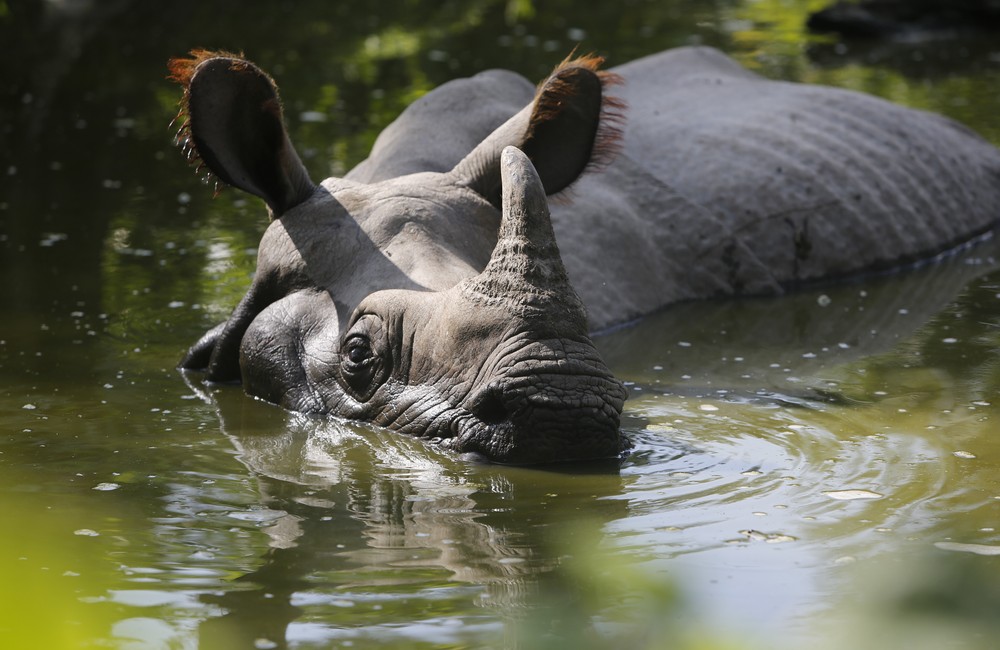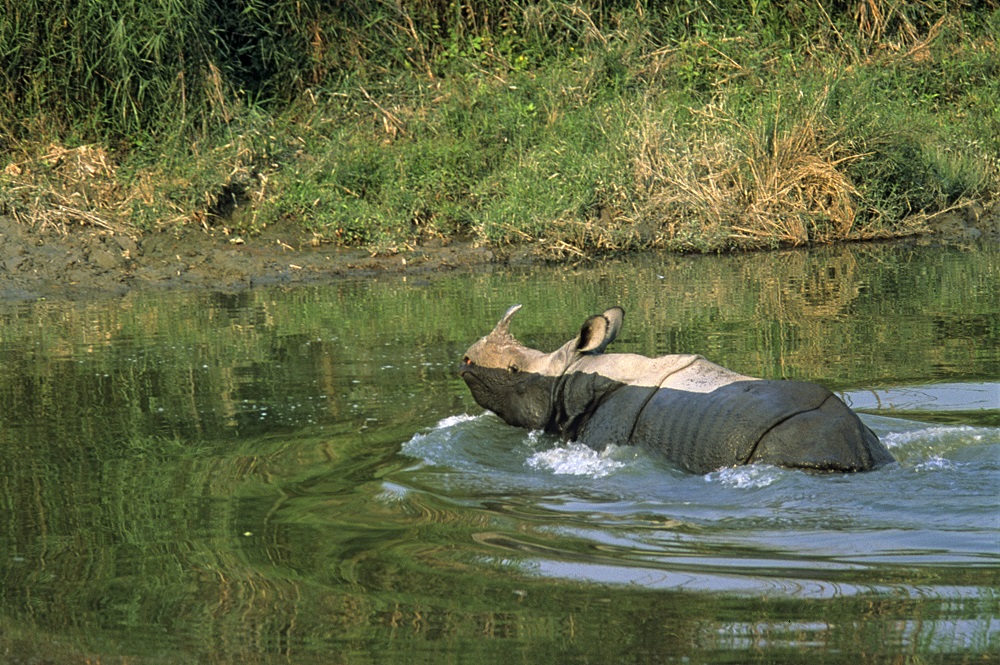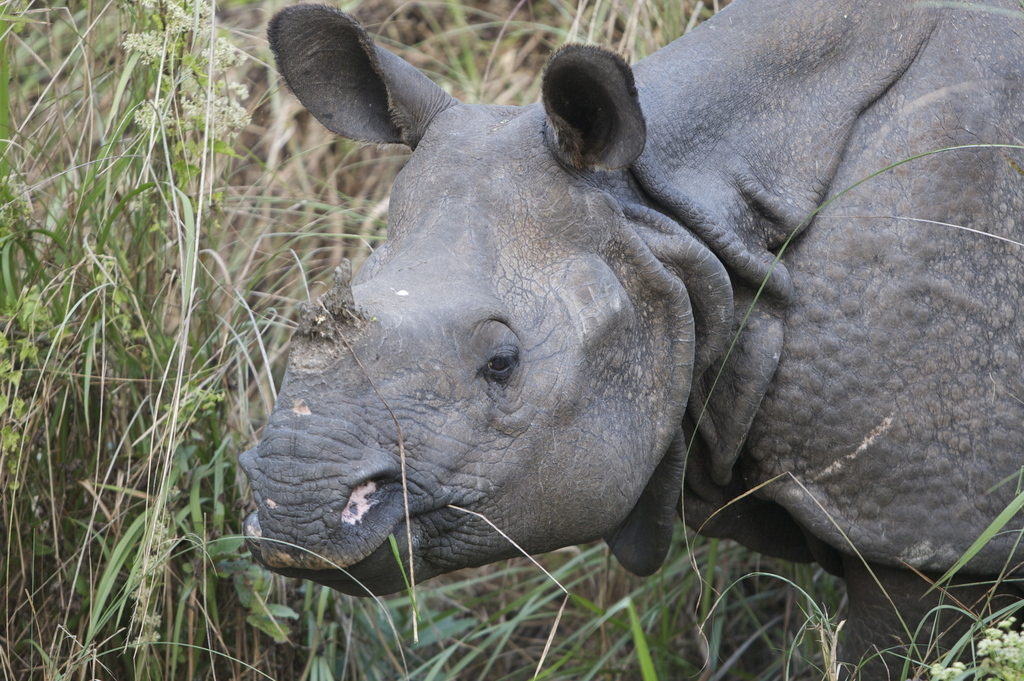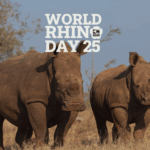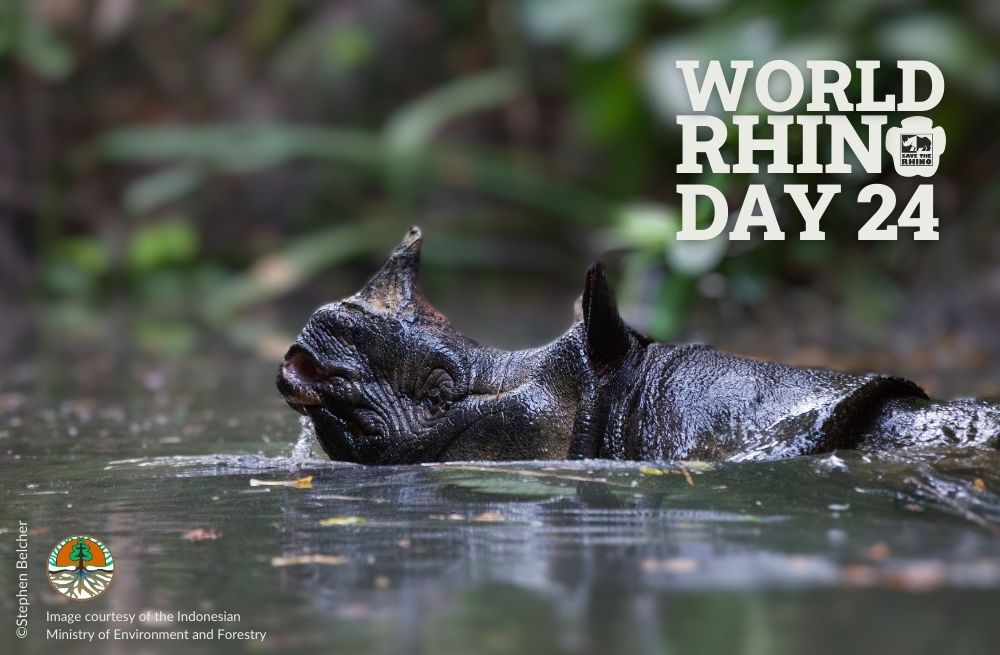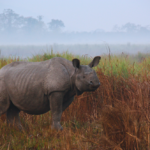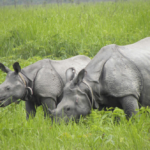Greater one-horned rhino
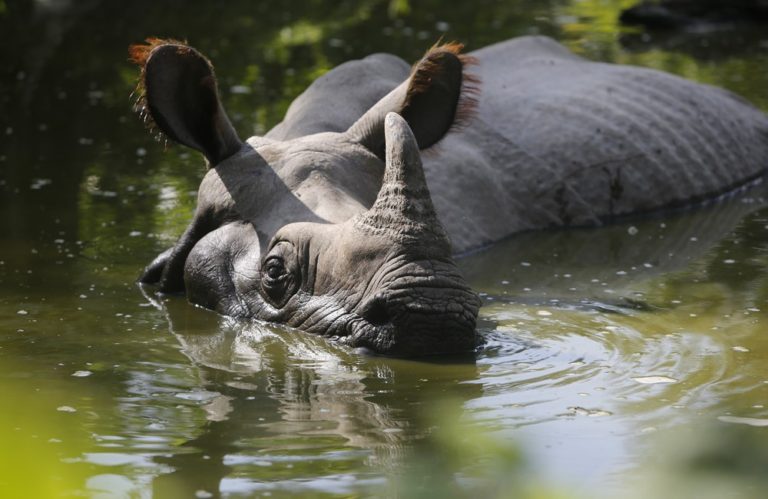
Fun fact:
Greater one-horned rhinos are good swimmers and can dive and feed underwater.
About Greater one-horned rhinos
Scientific name: Rhinoceros unicornis, ‘uni’ meaning one and ‘cornis’ meaning horn in Latin.
Under threat
The biggest threat that Greater one-horned rhinos face is human harassment and encroachment. For centuries, rhinos have been hunted for sport and for their horn. In the early 19th century, the Greater one-horned rhino was almost hunted to extinction. The remaining animals were only found in protected reserves, where, under the monitoring of certain organisations, populations are currently being brought back from the edge of extinction.
With strict protection from Indian and Nepalese wildlife authorities, Greater one-horned rhino numbers have recovered from under 200 last century to around 4,000 today. However, poaching has remained high, and the success is precarious without continued and increased support for conservation efforts in India and Nepal.
Habitat destruction and loss are further threats to the rhinoceros population. As Greater one-horned rhinos live in areas with very fertile soil, people use the same land for farming purposes. Conflicts between humans and animals are inevitable, and consequently damaging to the Greater one-horned rhino population.
The Mughal emperors of South Asia used Greater one-horned rhinos in fights against elephants as entertainment. The rhinos would often win. Thankfully, this sport is no longer practised or permitted.
Physical characteristics
- Size: the Greater one-horned rhino are the second biggest of the rhino species, beaten only by the white rhino
- Weight: usually between 4-6,000 pounds (1,800-2,700 kg)
- Shoulder height: the Greater one-horned rhino stands at around 1.75-2 m, and are 3-3.8 m long
- Skin colour: they have an ashy grey, hairless skin which develops thick folds, resembling armour plating. Several prominent folds of skin protect the neck. The skin has a maximum thickness of 4 cm. The subcutaneous fat is 2-5 cm thick and well supplied with blood; this helps thermo-regulation, meaning that the animal is able to regulate its own body temperature in varying weather conditions. Between the folds, around the stomach, the inner legs and the facial area, the skin is rather soft and thin
- The horn: Greater one-horned rhinos have one horn, which is typically 20-61 cm long, and weighs up to 3 kg. It has the same horn structure as the hooves of horses, and re-grows if broken off. It is not used for fighting but to search for food and to forage for roots
- Hair: found at the tip of the tail, around the ears and eyelashes
Location and habitat
- Location: the Greater one-horned rhino can be found in India and Nepal, particularly in the foothills of the Himalayas. In the past, Greater one-horned rhinos roamed freely in the floodplains and forests alongside the Brahmaputra, Ganges and Indus River valley
- Habitat: Greater one-horned rhinos are semi-aquatic and often take up residence in swamps, forests and riversides, and anywhere that is near nutritious mineral licks
Social behaviour and territory
- Sociability: Greater one-horned rhinos are usually solitary, except for females with small calves. Males have loosely defined territories where they live alone, which they defend aggressively, and this may overlap with other territories. The territories change according to food availability in relation to the current season. The females can move in and out of these territories as they like. If food is abundant within an area, it is not unusual to see several animals all grazing close together
- Male territory: male Greater one-horned rhinos fight violently for preferred habitual areas. The death of one male in one of these fights is not uncommon; it’s usually a few days later, due to wounds sustained during the fight
- Female territory: these tend to overlap with other territories, and also depend on the resources available in a particular area
- Scent-marking: rhino dung heaps, or ‘middens’, serve as communication points and mark territorial boundaries. Several animals often defecate at the same spot. Such a dung heap can become up to five metres wide and one metre high. After defecating, Greater one-horned rhinos scratch their hind feet in the dung. By continuing to walk, they ‘transport’ their own smell around the paths, thus establishing a scent-marked trail that is claimed by the rhino in question
Breeding and birth
- Sexual maturity: females may begin breeding at 4 years old, and males are usually sexually mature at 9 years old. There is no set breeding season, and a female will leave a gap of around 3-4 years between calves
- Gestation period: this is between 15-16 months. Just as she is ready to give birth, the cow will find a solitary, quiet space to calve
- Birth: at birth, a Greater one-horned rhino calf can weigh as much as 58-70kg. The calf will remain with its mother for the first year and a half of its life, before being rejected
- Maternal calves: a calf drinks on average 20-30 litres of milk per day and grows by 1-2 kg daily. They start nibbling and feeding on roughage at the age of 3-5 months, but may continue to suck up to the age of 20 months. Young calves are also vulnerable to the predation of tigers in the wild
Other interesting facts
- Food: they feed on a wide variety of plants (up to 183 different species!) with a strong seasonal variation: grass, fruits, leaves and branches of trees and shrubs, submerged and floating aquatic plants and agricultural crops. Greater one-horned rhinos eat on average 1% of their body weight daily, and are known to swim for their food
- Wallowing: mud wallows can be places where several individuals meet, as a kind of social gathering. Afterwards, they will separate again. Covering their skin in mud aids thermo-regulation by preventing overheating, and also suffocates any ticks or parasites that are embedded on the surface of the skin
- Teeth: although their horn may not be as long as other well-known species of rhino, Greater one-horned rhinos have very long lower incisor teeth that can be used in fighting to inflict deep wounds. A males’ teeth can grow up to 8 cm long
- Sounds: 12 different frequently-used communication sounds are known in Greater one-horned rhinos, including snorts, honks and roars
- Forest paths: Greater one-horned rhinos tend to use the same paths, which are marked by a scent gland on the bottom of their feet. Traces of their urine and dung, which can also be distributed on their feet, act as scent-markers as well
- Longevity: Greater one-horned rhinos live on average up to 30-45 years in the wild, while the longevity record for those in captivity is 40 years
- Swimming: they are very good swimmers and can dive and feed under water, seemingly enjoying the cool, wet elements of the surrounding lakes and riverine habitats
- Senses: they have a good sense of smell and hear very well, but are rather short-sighted
- Running speed: Greater one-horned rhinos can run fast (up to 40 km/h) and are very agile, despite their bulky shape and size
- Distinctive characteristics: aside from their unique ‘armour-plating’ appearance, they have a prehensile upper lip, much like that of the black rhino, which assists in foraging
- Conservation status: vulnerable, meaning that the species is likely to become endangered unless the circumstances that are threatening its survival and reproduction improve


